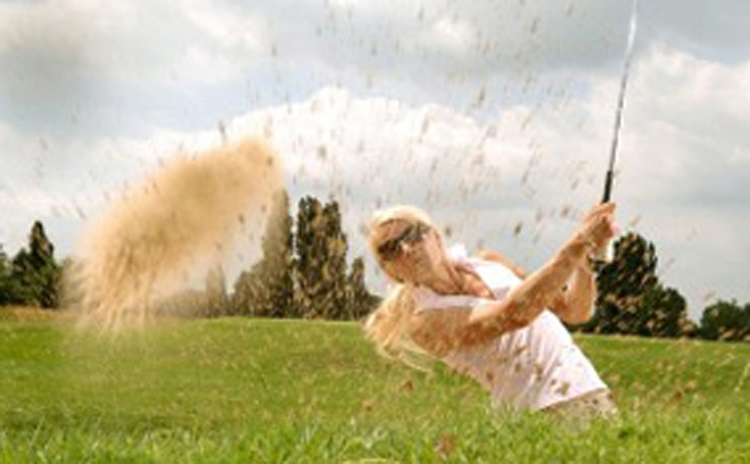
Golf is a fun and relaxing sport that requires time, patience, and skill. It is one of America’s all time favorite sports and you don’t necessarily even have to be good at it to go out, walk 18 holes, and have a great time–it’s also great exercise. However, there are injury risks in golf just like in any other sport. The most common golf injuries are muscle strains and disc injuries. Most recently we have seen a large amount of back injuries in the PGA, especially with Tiger Woods’ back spasms. We want to make sure you know how to avoid back pain when you head out to the course.
Preventing Lower Back Pain
Warm Up Before You Play:
Don’t go directly to the first tee and start swinging. Just because you aren’t running does not mean you can’t get injured on the course–so remember to stretch! Focus on your shoulders, torso, hips, and hamstrings. Try these stretches to warm up:
- Seated Twist: Sit upright in a chair with straight posture. Twist your back to the left, creating torque. Hold for ten seconds. Switch directions, hold, and repeat. This stretch loosens your back muscles.
- Seated Hamstring Stretch: This stretch also loosens your back muscles. While seated, place one foot on a table and lean over it. Hold for ten seconds trying to maintain a straight back. Switch legs and repeat.
Practice Swinging:
Spend some time at the driving range to warm your muscles up. Try to keep your swing smooth and rhythmic. If you try too hard and apply too much torque, your shot will flop and you may injure yourself. It’s also important to keep good balance, remember to bend you knees and keep your spine straight as you swing. Posture is very important in golf, so if you have trouble keeping good posture naturally, consider RecoveryAid to encourage a straighter spine. We recommend that beginners work with a golf pro to perfect their swing to avoid back pain.
Carry Your Golf Bag in the Right Position:
Not everyone has the luxury of a caddy like Tiger Woods does. If so, get a standing golf bag–repeatedly bending over and lifting a heavy bag can aggravate your lower back problems. Also, make sure your straps fit you properly so the weight is evenly distributed, which is why we suggest a bag with dual straps. However, if you really want to avoid back pain, don’t carry your bag at all–take a golf cart.
On The Course
Navigating the course is not the only thing that can cause back pain. The biomechanics of your swing it important too; so let’s analyze your swing.
- Backswing: The key to your backswing is keeping your knees bent and turning your left shoulder downward. This allows your thoracic spine, not your lumbar spine, to handle the twist. The thoracic spine is designated for twisting moving, whereas the lumbar spine is not.
- Downswing: When coming down from the backswing, force your lower body into a squat. Your quads and glutes are an excellent power source that can absorb the torque of your swing. The squat also prevents your hips from moving too far forward, taking pressure off of your spine.
- Impact: Ninety percent of your body weight should be on your left foot at the impact point, with your shoulders and hips level. If you keep pressure on your back foot, it may put pressure and torque onto your lumbar spine. Rely on your hips to rotate your body as you swing.
- Finish: Push your pelvis toward your target, keeping your weight on your front foot. You should be able to stand fully on your front foot without falling, if you tried. This will allow your core and glutes to absorb the stress rather than your back. You should be standing at your normal height when you finish your follow through.
Treatment
If you do get a injury while playing golf we recommend taking a day or two off. Don’t worry, the next round of 18 can wait until next week! It’s better for you to rest and heal than strain yourself more. Try using an ice pack or heating pad with some over the counter pain relief medications as directed. Slowly begin stretching your muscles and back to help with recovery and try to begin walking for 30 to 40 minutes a day. However, if the pain continues for more than a week, contact your doctor or physical therapist to schedule an appointment.
